Playing Gankers - The Basics
Sando
November 14, 2012
Introduction
This is the last (!) in my series of basic guides to the different playstyles in DOTA 2. Today we're looking at Gankers...
Ganking is one of the most difficult and rewarding skills in DOTA. To do it right requires a high degree of skill, judgement and aggression. You've got to be prepared to gamble, take risks and hope that you did enough to stack the deck in your favour.
Although the stats and heroes involved changes from game to game, and from the early to late stages, the techniques and skills needed are usually the same.
Being a good ganker takes skill and experience – it’s not necessarily an easy place for beginners to start.
What is a ganker?
Gankers are heroes who excel at killing enemy players, usually in small scale fights and ambushes. They probably fill another role in the team too, usually semi-carries or semi-supports, but have a collection of skills that makes them good at killing heroes.
Why are they important?
Unless an enemy hero manages to spend all their gold before dying, each successful kill will transfer at least 500 gold between the two teams (250+ gain, 250+ loss), plus a substantial chunk of experience. This is before you begin to include the time and opportunity lost that could be spent farming and levelling up.
Teams that gank well can accumulate an advantage in both gold and experience, and establish a psychological edge of their opponents. It also opens the door for other actions by the team, such as pushes and team fights.
Early Game
Ganks are usually the most important events of the early game. In the laning phase a successful gank will usually give one team a definite advantage over the other in that lane (or help even things up if they were behind). That advantage helps them to dominate the lane, boosting their gold/experience, and reducing the enemy team’s.
Be very careful when choosing a ganker, and where to lane. You generally need farm and levels early game - so shouldn't be laning with a carry unless you have something very specific in mind. Ideally, you probably want to be solo mid.
Mid-Game
The most efficient way for a team to farm is to spread out across the different parts of the map. This lets each hero get their own supply of last hits and experience.
Carries especially rely on having good sources of farm, and this generally means being away from the rest of their team.
Ganks on enemy carries help keep them from getting too big and strong, giving you more time and opportunity to win the game. Successful ganks also give your team the chance to engage in a team fight or tower push while the enemy team has fewer players on the map.
Late-Game
While individual ganks are less important in terms of money/experience at this point; what they do get you is opportunity. Respawn times increase as you level up, so taking out an enemy hero away from a risky team fight is extremely desirable. This means you can then force a team fight where you outnumber the opposition.
Playing Mid
Most teams select a solo-mid player to quickly gain levels and gank the opposition (not always, but usually). At the start of the game they are the most important player on the team, for the following reasons:
Having a solo lane allows you to level up much faster than players in dual lanes (nobody to share experience with):
- The only person you’re competing for last hits with is the enemy player
- You’re in the best position to collect runes and gank the other lanes
- This gives mid-players a lot of influence on the game, and as we all know, with great power comes great responsibility.
Make sure you pick a suitable mid hero; you’re not going to make any friends if you take the lane from somebody more appropriate. You need a hero with at least some of the following attributes:
- Strong last hitting/denial potential
- Benefits greatly from out-levelling opponents early game
- Powerful ultimate ability
- Good ganking potential
- Some kind of mobility/vision aid for collecting runes
Tips for playing Mid
- Slow your lane at the start by body blocking
- Try to prevent the lane pushing out too far (avoid fighting uphill and near their tower)
- Maximise both your last hits and denies
- Keep an eye on the clock, runes spawn every 2 minutes
- Keep an eye on the mini-map, looks for opportunities to gank
- Try to combine rune collection with ganks where possible
- Co-ordinate with your team on ganks
Runes
There are five types of Rune in DOTA:
Double Damage: massively increased damage on your right-click attacks (not spells). A great ganking rune as it allows you to kill your target(s) much more quickly. Generally you want to approach from behind them to maximise the number of hits you get.
Invisibility: grants 45 seconds of invisibility, provided you don’t attack, use items or abilities. This is nearly a perfect ganking rune, allowing you to get into a good position unseen. Beware of lanes pushed tight into the tower (they have true sight) and also ganking lanes where you have invisibility heroes (e.g.  Broodmother or
Broodmother or  Bounty Hunter) as the opposition may have
Bounty Hunter) as the opposition may have  Sentry Wards down.
Sentry Wards down.
Haste: maximum movement speed gives you great manoeuvrability around the map, allowing you to turn up unexpectedly. This rune works better on some heroes than others – strong right-click (e.g.  Templar Assassin) and positional heroes (e.g. Windrunner or
Templar Assassin) and positional heroes (e.g. Windrunner or  Earthshaker) get the most benefit.
Earthshaker) get the most benefit.
Regeneration: unless you’re low on health/mana, this is the weakest rune for making a gank as you get no benefit from it other than being able to restore yourself afterwards.
Illusion: Making 3 copies of yourself can be useful for ganking, or for causing confusion on the enemy team. Generally when ganking it improves your chance of body blocking, does a little extra damage and makes it difficult for the enemy to pick out your actual hero for stuns.
Alternatively, you can split your illusions up and simply try to cause confusion. Unless an enemy hero sees you use an ability or give/take damage they won’t know which one if your actual hero. For instance, you could move one of your illusions slightly ‘clumsily’ so they see ‘you’ hiding in a well known ganking spot. They will likely hug the tower and not contest the lane – allowing your team mates an advantage. In the meantime, you could be moving in to gank the other lane while they think you’re elsewhere.
Judgement
Gankers need to make accurate calls about which heroes they can realistically gank at different stages of the game, and how much help they may or may not need to do it successfully.
Bad judgement calls will usually lead to failed ganks, and quite possibly your own death or that of a team mate.
There are many, many skills and heroes in the game – as a ganker you need to have at least a working knowledge of what they can do to fight back and/or escape.
For example,  Pudge is a strong ganker and early roamer. There are some spots on the map where you can hook an opponent into a gap in the trees, and trap them while you
Pudge is a strong ganker and early roamer. There are some spots on the map where you can hook an opponent into a gap in the trees, and trap them while you 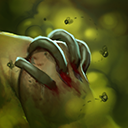 Rot them. However, heroes with a blink like
Rot them. However, heroes with a blink like  Anti-Mage or
Anti-Mage or  Queen of Pain might still be able to escape unless you have another hero there to chain stun them.
Queen of Pain might still be able to escape unless you have another hero there to chain stun them.
Understanding heroes and thinking ahead
To be a good ganker you need to understand your “prey” – what abilities do they (and other nearby heroes) have that might screw up your attack? You also need to have a clue what your allies can do if they’re going to be involved.
You’ve got to assume that unless you can kill them quickly or keep them completely disabled that they will use their abilities. Will that be enough to badly hurt you? Will it stun you long enough for them to get away? Have you got a plan B if this happens? Have they got any heroes with a global presence or spell who might disrupt things? (e.g. a Natures Prophet,  Invoker or
Invoker or  Chen)
Chen)
Team mates
While there are times you’re sufficiently ahead in levels, farm, etc that you can take a hero out 1v1, at other times you are reliant on team mates to help you.
First of all, make sure they know that you’re coming to gank. Drawing a quick line on the mini-map gives them a clear indication. Hopefully they will have sufficient experience to wait for you to arrive and initiate.
Be very careful of some spells and abilities – we’ve all been in games where  Outworld Destroyer manages to save an enemy hero with a badly timed
Outworld Destroyer manages to save an enemy hero with a badly timed  Astral Imprisonment or
Astral Imprisonment or  Bane’s
Bane’s 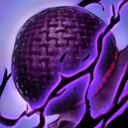 Nightmare ends up on an ally.
Nightmare ends up on an ally.
Positioning
A good gank relies on getting into position unseen. A ‘good’ position is one where you can get close the enemy hero using trees or height differences to stop them seeing you.
Generally you want to be away from their towers so that you don’t have to risk chasing them past it, or allow their team mates to teleport in.
Try to be unpredictable about where you gank – if you keep only ganking one side then the enemy team will get wise to you and possibly setup a counter gank.
Awareness
We discussed Map Awareness in a previous article (Link). All of those points apply, and doubly so when you are ganking aggressively. You need to know when enemy heroes are out of their lanes, possibly leaving them vulnerable or making them a risk to you.
Be very aware of the time of day too – Line of Sight (LOS) is massively reduced at night time, and  Observer Wards tend to have just run out on the 6 minute mark…
Observer Wards tend to have just run out on the 6 minute mark…
Choosing a Ganker
While we all have our favourite heroes and playstyles, some gankers really need the right targets on the enemy team to be truly effective. Assuming a similar skill level, some heroes can really make it difficult for others in the middle lane – letting them get a great start while you suffer will generally work out badly for you and your team.
In the same way, some skills are brilliant against most heroes, but almost useless against a few others. For example, slows don’t really work on  Dark Seer or
Dark Seer or  Queen of Pain as their abilities will still allow them to override or escape the effects.
Queen of Pain as their abilities will still allow them to override or escape the effects.
Also be aware of what the rest of your team has picked – do they have skills that will help you to gank? Or do they lack the abilities to do so? How aggressive is the enemy line up? Will they be looking to push early? Gank? Turtle?
Gankers can stack well together – sometimes it’s worth sacrificing balance for a team that can tear the opposition to pieces in the early game and finish before carries really come into it. This is a risky strategy however, and does rely on your team being fully committed to it.
Using your skills
Make sure that you know your abilities well, and the levels/damage that you will get out of them. Often ganks can succeed or fail on very tight margins. If you have a combo, make sure you know how to use it quickly and consistently.
Some ganking skills like 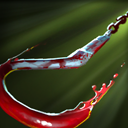 Meat Hook, Arrow or
Meat Hook, Arrow or  Fissure require a fair bit of practice to master – if you’re trying to learn these heroes then be sure to get some practice offline first before inflicting you n00by ineptitude on the general public.
Fissure require a fair bit of practice to master – if you’re trying to learn these heroes then be sure to get some practice offline first before inflicting you n00by ineptitude on the general public.
Items
The early-mid game is the most important time for ganking heroes, so there is rarely time for them to invest in lots of expensive items. However, there are some cheaper ones that can prove extremely useful:
 Bottle
Bottle
Already a great item for mid-players, the bottle gives you several regeneration charges, and the added bonus of being able to hold runes for a limited time. This means that you can use them exactly when you need to.
 Phase Boots
Phase Boots
Often the success of ganks can be down to a single hit or being able to get in range to cast one last spell. Phase boots give you the edge when chasing down fleeing heroes, and the bonus damage comes in useful too.
 Urn of Shadows
Urn of Shadows
The urn provides good stats (especially for strength heroes) and some mana regeneration too. However, its main use is to collect and deploy charges. Whenever you’re within range of a dying enemy hero, you get 2 charges. These can then be used to either heal yourself or allies for 400hp, or damage enemies for 150hp.
At this point in the game, 150hp acts as a reasonable nuke, and each success will give you more charges for the next attempt. Only 1 urn can collect charges from a dying enemy hero, so be careful to never have more than 1 on the team.
 Orb of Venom
Orb of Venom
A very cheap and underrated item, it adds 3 damage per second (for 4 seconds) to your attack, but more importantly, a 12% movement slow for melee heroes. This is great for chasing down heroes, allowing you to kill them sooner and saving you from tower diving.
The movement slow is only 4% for ranged heroes, so maybe not so worthwhile.
 Medallion of Courage
Medallion of Courage
Adding armour and mana regeneration stats, the active ability strips you of that bonus armour, but also takes 6 armour away from the target. This is very effective for heroes who inflict physical damage, but not for nukers.
Dagon
A very polarising item, and also by far the most expensive on this list. At level 1 the Dagon offers some intelligent, damage and general stats. However, what it’s really about is the 400 damage nuke that it gives your hero.
People tend to love or hate Dagons. A lot of players buy them purely to kill steal, and this can be very irritating. Dagons are also only effective during the early-mid game, and tend to rapidly lose their potency as the game progresses.
Generally Dagons should only really be used by nukers who already have high burst damage, and want to further increase it. Examples would include:  Tiny,
Tiny,  Lion,
Lion,  Lina and
Lina and  Tinker.
Tinker.
Summary
I hope you have found the tips mentioned here useful. Ganking is one of the most challenging and interesting parts of DOTA – but it’s not for the faint hearted or inexperienced.
Spend some time playing semi-support characters with some ganking abilities as a lane support, and start taking some opportunities to setup ganks or roam if your lane is going well. This way you can learn some of the tricks of the trade while not relying on them to be successful.
Watch how other players (on either team) use particular heroes – what worked well? What didn’t?
Gankers need to have a broad knowledge of other heroes – if you don’t know enough about them you can easily be caught out. If you are often beaten badly by a particular ganking hero, it can be worth playing them to find out their weaknesses and how they work.
Ganking for Beginners – a brief guide to Nightstalker
As already stated, I think new players would be better off starting with semi-supports who gank a little first, but we’ll take a quick look at a full-blown ganking hero.
 Night Stalker is a ganking hero who is relatively easy to learn, if difficult to master. The first thing to be aware of is that he’s underpowered during the day, but overpowered at night…the perfect time for ganking. His style is tanky and direct.
Night Stalker is a ganking hero who is relatively easy to learn, if difficult to master. The first thing to be aware of is that he’s underpowered during the day, but overpowered at night…the perfect time for ganking. His style is tanky and direct.
Like many gankers,  Night Stalker needs a good start to give him as big an advantage as possible in the early game. This means levels as well as farm – so really you want a solo mid.
Night Stalker needs a good start to give him as big an advantage as possible in the early game. This means levels as well as farm – so really you want a solo mid.
During the early part of the game, you are probably at a slight disadvantage, and will need to get what farm you can without being harassed off the lane. Once first night arrives, the tables turn…stop farming, start ganking.
 Night Stalker has a fairly simple attacking style.
Night Stalker has a fairly simple attacking style. 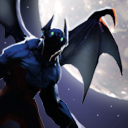 Hunter in the Night gives you a large bonus to movement and attack speed, allowing you to chase down and bully most heroes.
Hunter in the Night gives you a large bonus to movement and attack speed, allowing you to chase down and bully most heroes.
Successful ganks with Balanar are mostly about speed and surprise. Start with  Void, use
Void, use 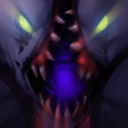 Crippling Fear if necessary, auto-attack a few times and then
Crippling Fear if necessary, auto-attack a few times and then  Void again if you need to. You can get away with a certain amount of tower diving, but still need to use your judgement.
Void again if you need to. You can get away with a certain amount of tower diving, but still need to use your judgement.
Generally most builds involve several points in  Void to maximise the damage, and a single point in
Void to maximise the damage, and a single point in  Crippling Fear. Although you want to use
Crippling Fear. Although you want to use  Void to damage and slow them, don’t underestimate the usefulness of your silence – it can stop targets with escapes from using them, or their allies from stunning you. It also makes them miss 40% of their attacks if they do try to turn and fight…
Void to damage and slow them, don’t underestimate the usefulness of your silence – it can stop targets with escapes from using them, or their allies from stunning you. It also makes them miss 40% of their attacks if they do try to turn and fight…
You can move very quickly at night, but you still need the enemy players in a position where you can get at them. If the enemy has warded, drop back onto your side of the map and go round instead of running down the river – you are quick enough that the extra time taken is minimal.
 Night Stalker is reliant on getting kills in the first night to have a good game. If played correctly, you can tear the enemy team to pieces and give your allies free rein to farm their lanes, while the opposition cower near their towers in fear.
Night Stalker is reliant on getting kills in the first night to have a good game. If played correctly, you can tear the enemy team to pieces and give your allies free rein to farm their lanes, while the opposition cower near their towers in fear.
If you want to try out Balanar, be sure to check out some full guides first!



















Quick Comment (10) View Comments
You need to log in before commenting.